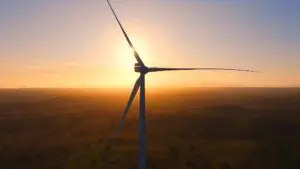Well, hallelujah. It turns out Australian households are going to get free electricity – at least on the generation side – if you believe the modelling that has been shoved at us from the Energy Security Board and now the Australian Competition and Consumer Commission.
According to ACCC data released in its voluminous and damning report on the electricity market on Wednesday, the average household bill in Australia is $1,636 a year, of which $560 is made up from wholesale electricity.
According to the ESB modelling, they are going to be able to reduce household bills by $400 a year thanks to the reduction in prices of the wholesale market, initially due to the impact of more wind and solar via the renewable energy target, and then by the National Energy Guarantee.
The ACCC reckons that its suite of measures – quite separate to the NEG – will reduce the price of wholesale electricity by $155 a year.
Bingo! If you believe these numbers, then the cost of wholesale power will be reduced to just $5 in the average household bill.
It’s a nonsense, of course – just part of the merry-go-round of hand-wringing, economic theory, useless promises and “concern for consumers” that has been used as cover for the outrageous surge in electricity prices over the past decade.
ACCC chair Rod Sims is right. Customers are getting screwed at every turn – by inflated network prices, in the wholesale market because of lack of competition (although, he says extraordinarily, apparently not because of abuse of market power), and in retail bills.
This has been going on in full sight of the ACCC, state pricing regulators, federal regulators and state and federal governments for nearly a decade now.
We, and others, have been writing about it for years. So have the regulators themselves, in equally voluminous reports, and any number of analysts. But precisely nothing of consequence has ever been done about it by the authorities.
Instead, they have actually made it worse, rejecting and delaying rule changes and policies that could encourage efficiency, demand management, and battery storage – all of which could have moderated prices.
About the only protection the consumer has had is to install rooftop solar, and lately battery storage. Unsurprisingly, rooftop solar is the main target whenever the authorities are galvanised into action.
Sims made a big deal out of network prices way back in 2011, when he was head of IPART, the pricing regulator in NSW. He didn’t do much about it then, although he did try to push through retrospective changes to the premium feed-in tariffs for rooftop solar in the state.
That feed-in tariff – 60c/kWh gross – was overly generous, no doubt about it – and the government and the regulators had been told as much by the industry itself, who warned them that it would need to be scaled back, and early.
But politics is politics and they ploughed on, resulting in a cost blowout, drastic action, sudden closure, the threat of retrospective changes and a major conflict with the industry. The retrospective changes didn’t go ahead, but the boom in the solar market came to a crunching end.
Now Sims is targeting rooftop solar again. Of all the 50-something measures canvassed by Sims on Wednesday, none was so drastic as the call for the federal government’s small scale renewable energy scheme (SRES) to be abolished by 2021. One option canvassed was to kill it immediately.
This is a problem. A big problem, and a frightening one for consumers.
Not only has rooftop solar delivered protection from the outrageous pricing of the electricity market as a whole, they have also brought wider benefits – from reducing peaks and pushing hem into the evening, and moderating wholesale prices.
It is also the future the energy.
The Australian Energy Market Operator, network owners, the CSIRO, and analysts such as Bloomberg New Energy Finance say that distributed generation – which includes rooftop solar and battery storage and demand management – will account for nearly half of capacity and generation by 2050, if not earlier.
But all things are not equal, barriers remain, chief among them the need to think differently about the grid, rather than seeing wind and solar and other technologies as a barely tolerated add-ons to a market for fossil fuels.
You can see that thinking has not caught on with conservatives, and particularly not the Coalition government. For the life of them, they can’t see beyond the need for baseload or how dispatchable capacity could come from anything other than coal, gas or nuclear.
And it’s not caught on with regulators either. As I reported way back in 2011, at the height of the debate over the solar tariffs, Sims and AEMC chairman John Pierce let it be known what they thought of solar – that it was, and always would be, an expensive option to produce electricity and reduce emissions.
Worse, they seem to resent the fact that people who have invested in rooftop solar benefit from lower bills than those that don’t. How dare they cut their bills!
Rooftop solar has fallen in price by some 70 per cent since those days, and by most forecasts outside of vested interests and ideologues will be the dominant form of generation across the globe. Even the IEA sees solar as the biggest contributor to electricity by 2050.
And this is what is frustrating about the ACCC report.
It ignores the need for emissions reductions. As ITK analyst David Leitch points out here, and as The Greens point out, you can’t claim “technology neutrality” and be serious about decarbonising the grid at the same time.
Not only that, the ACCC pretends the gaming in the markets is not happening, and it does not address the inflated pass-through cost of green schemes that make them look more expensive than they are.
It’s interesting to note that they do recognise that the cost of the LRET (large scale renewable scheme) will disappear to zero or negligible levels from about 2020/21, but their call to blow up the small scale solar scheme does not make sense.
For one, it’s a scheme that is being gradually wound back anyway. The benefits of added solar to the grid far outweigh the 40c-a-day average cost of the scheme.
If the regulators really wanted to be clever, then maybe find a smart way to ensure that low-income households and renters and others get to have solar, and storage.
Instead, they apply the hand-brake, to slow down the transition. This has been the story of Australia’s energy market for more than a decade.
Almost every report done by a statutory authority has refused to contemplate what a decarbonised grid might look like. Sims falls into the same trap.
And because technologies like rooftop solar and battery storage will start in the home, or the business, the only hope for consumers, it would seem, is that AEMO comes up with something sensible in its Integrated System Plan.
The ACCC’s proposal for some sort of auction scheme for new projects to bid for a government-funded tariff for years 6-15 of the asset life – so to help lock in debt – looks interesting, although is largely dismissed by Leitch in his analysis.
But it seems to be an assessment and an admission that the NEG will not attract new investment in of itself – as so many different analyses have concluded.
It’s just a little depressing that prime minister Malcolm Turnbull still thinks this might be taken up by new coal plants, that the Nationals and others are convinced that it would be, and that Sims solution to back-up power is to “drill, baby drill.”
“We’re not advocating one technology or another,” Turnbull said in a radio interview on Thursday. “We don’t need to subsidise one technology or another. We’ve got to get lower prices. That’s what I’m on about, lower electricity prices.” Clearly, he’s not about leading a party taking climate change seriously.
“It is throughly disheartening that this nonsense is being bandied around by the highest authorities in the land in complete disregard of the native impacts on climate, health and the economy,” one energy industry veteran emailed me today.
“It makes me want to give up and stick my head in the sand along with the rest of the population.” Exactly what the fossil fuel industry and their spokespeople in the government are hoping.
How the state governments can possibly reach a conclusion about the NEG on August 10, given the implications of what Sims is proposing, and with the finer detail of the NEG delivered just a week earlier, is beyond comprehension.
“Trust us about the details,” say the big business lobby groups who have championed the NEG, at the same time as saying that adding any more renewables to the system would cripple the economy. It seems the energy wars are only just beginning.









